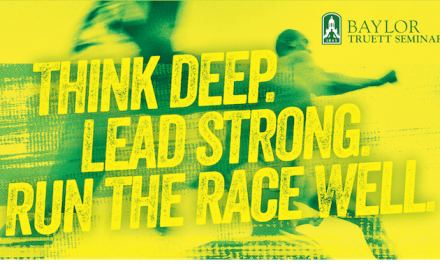Paul Putz
There are not many issues that cut across the political spectrum, with people left, right, and center all agreeing that there is a problem.
But one issue that seems to fit the bill is youth sports. Nearly everyone laments that it has gotten out of hand: the increasing demands of time and money; the lack of access for poor families; the selfish and sometimes belligerent behavior of parents and coaches.
The creation of initiatives like the Aspen Institute’s Project Play, which provides research and analysis focused on building a healthier youth sports infrastructure, testifies to a growing consensus that we can and must do better.
For Christians, these concerns are compounded by the way youth sports demand devotion even on Sunday. Rather than regular church attendance, parents haul their young athletes across the country on weekends, living the travel team life.
Consider this recent post from pastor and author Duke Kwon, which generated serious engagement and feedback:
Yet even if there seems to be a consensus that something is off about youth sports, it is not clear exactly how to get things back on. The problems are complex, the answers are not easy—and are often dependent on contextual factors that require wisdom and discernment.
In the past I’ve offered a few suggestions for Christians to consider. At the same time, I think it is important to develop a deep understanding of the problem before jumping to the proposed solutions. We should recognize that cultural patterns don’t emerge from nowhere; they take years to develop. In the case of youth sports, the problems were already apparent in the 1970s, when a journalist named Gary Warner tried to raise the alarm and encourage Christians to take the lead in working for change.
As the editor of The Christian Athlete, the official magazine of the Fellowship of Christian Athletes (FCA), Gary Warner was uniquely positioned to observe cultural trends related to sports in American life.
A former sportswriter, Warner gave his life to Christ in the 1960s and shifted his focus to ministry. He worked for Billy Graham’s Decision magazine before moving to the FCA and taking over as editor of The Christian Athlete in 1968.
Until Warner came along, the magazine was mostly a newsletter that provided inspirational testimonials and updates on FCA activities. Under Warner’s tenure, which stretched from 1968 though 1977, The Christian Athlete matured. It expanded to thirty-two pages, developed feature articles on key issues in sports culture, and won several journalism awards.
If Sports Illustrated was the “bible of sports,” The Christian Athlete was the journal of record for an emerging evangelical sports subculture that surged to national prominence in the 1970s (this subculture is the main focus of my forthcoming book).
With his eye on emerging trends, Warner took notice of the growing professionalization of youth sports, with highly organized leagues featuring championships and media attention for an ever-younger group of athletes. It first caught his attention in 1974. Two years later, after gathering information and conducting interviews, he published a two-part series on youth sports in The Christian Athlete. In 1979, after leaving the FCA, he published a chapter based on that series in his book, Competition.
Warner sought a balanced approach to the issue. His series featured interviews, articles, and survey data from athletes, coaches, parents, and scholars (psychology, philosophy, and physical education were represented). He also attended a National Youth Sports Directors Conference, speaking with youth sports leaders and getting their perspective.
But while Warner acknowledged there were positive benefits to youth sports, his investigation convinced him that the problems were not getting enough attention.
“Youth sport programming can provide good coaching, can provide healthy learning exposure, can provide earlier skill attainment,” he wrote. “Grade all these a tentative can. Because when can is not the priority, disaster may well be the result to young bones and psyches.”
Consider some of the points he made and compare them with today:
- “Spontaneous, unsupervised play is actually in some cases an anomaly on the youth sports scene.”
- “Youth sports are spawned and sustained by the pride, ego, and youth and sport mania of adults.”
- “When we treat the little competitors as people, this means we loosen up, allow for mistakes, don’t take ourselves so seriously, maybe even have a good laugh. Laughter is in short supply on the youth sport front.”
- “If our goal is to produce skilled professionals and Olympic champions at the expense of play and fun, youth league sports are on target. If our goal is to produce a nation of playing, active, sport-involved-people-for-a-lifetime, then the youth sports concept needs overhauling.”
- “It seems there is a sharp contrast between much of what is seen in youth sports and Jesus’ concept of greatness. Much of what is construed greatness in youth sports involves the exploitation of youth and their manipulation to satisfy the whims of adults. We, in turn, teach our children to be manipulators and exploiters in the name of competition. Jesus defines true teaching and caring and leadership in totally different terms.”
Warner noticed other problems as well. The lack of training for volunteer coaches. The win-at-all-costs attitude pervading youth leagues. The time commitments, with “family life scheduled around games and practices.”
And also the hard truth that serious reform was unlikely, because, when push came to shove, the adults who organized youth sports couldn’t help themselves from pursuing the rush that came from claiming a winning team or a star player as their own.
“A monster roams at will, but it is such a fuzzy, cuddly monster of our own creation that we never really contemplate destroying it,” Warner summarized. “Instead, we are prone to rationalize and compromise for it, and find ourselves in a paradoxical love-hate relationship.”
If you’re like me, Warner’s words seem just as relevant today as they were fifty years ago. In fact, when it comes to the time, money, and attention given to youth sports, things have only gotten worse. Warner was writing before the rise of “elite” travel teams—AAU, for example, had not yet shifted its focus from adult sports to youth basketball. The pattern of regularly skipping church on Sunday for a baseball or volleyball tournament was not on the radar for Warner.
Read Linda Flanagan’s excellent book, Take Back the Game: How Money and Mania are Ruining Kids’ Sports—and Why it Matters, and you can get a full picture of just how much the problems Warner identified have expanded.
For Christians, one response to the seemingly inevitable growth of the youth sports industry is to despair that anything can be done. If people like Warner were raising the alarm fifty years ago and things have gotten worse, what’s the point?
Another response, however—the response I would suggest—is to take heart. Those who are seeking a better way have allies in the struggle. Not just across space and across religious traditions and affiliations, but across time. Ultimately, Christians shouldn’t resist unhealthy trends in youth sports because we expect to be successful, but because we are called to be faithful.
Warner concluded his series on youth sports with these thoughts:
“If we are Christian athletes, coaches, parents, and spectators, we have a mandate to scrutinize youth sports and all its ramifications. The Scripture calls us a ‘peculiar people,’ meaning a people set aside, a people with different values, a people called to elevate societal standards of living and believing. This should affect our attitudes toward the whole of athletics and competition, including youth sports.”
Perhaps youth sports cannot be tamed. But we should be encouraged that so many people are pointing out its problems—and some of them have been at it for over fifty years.





